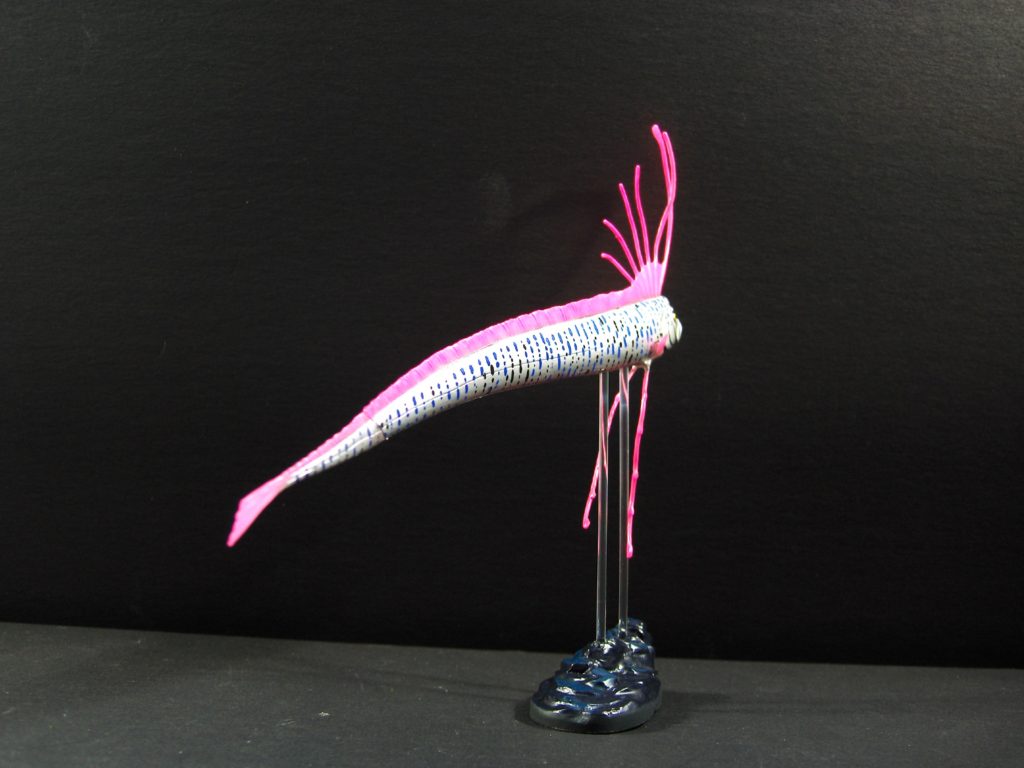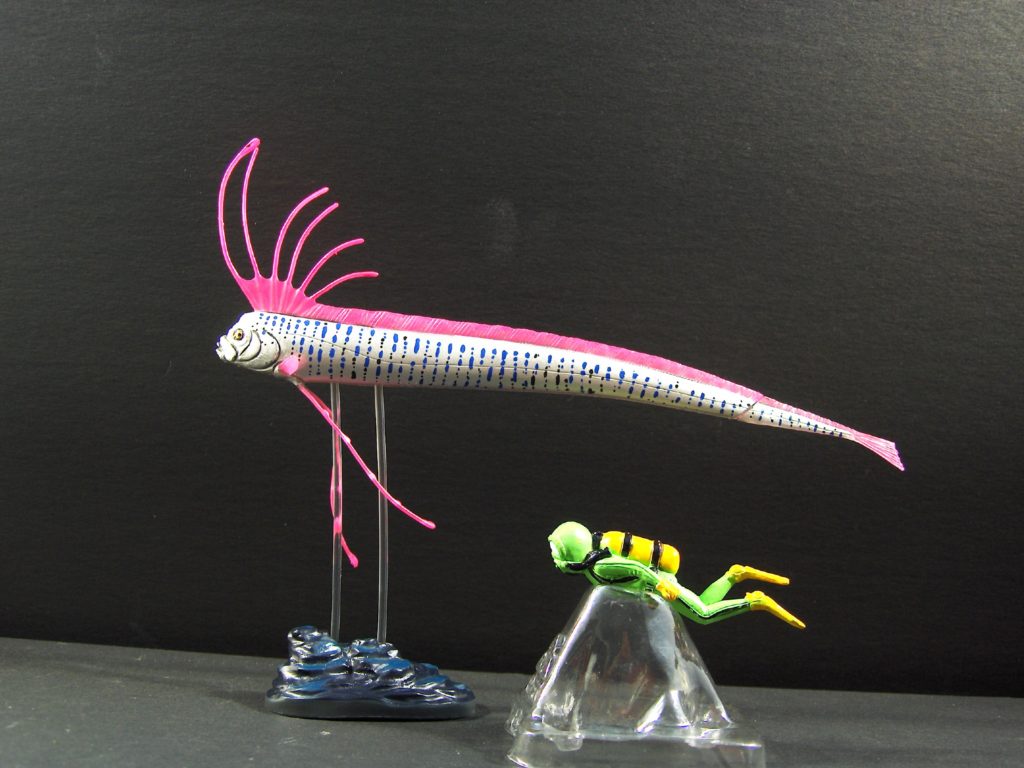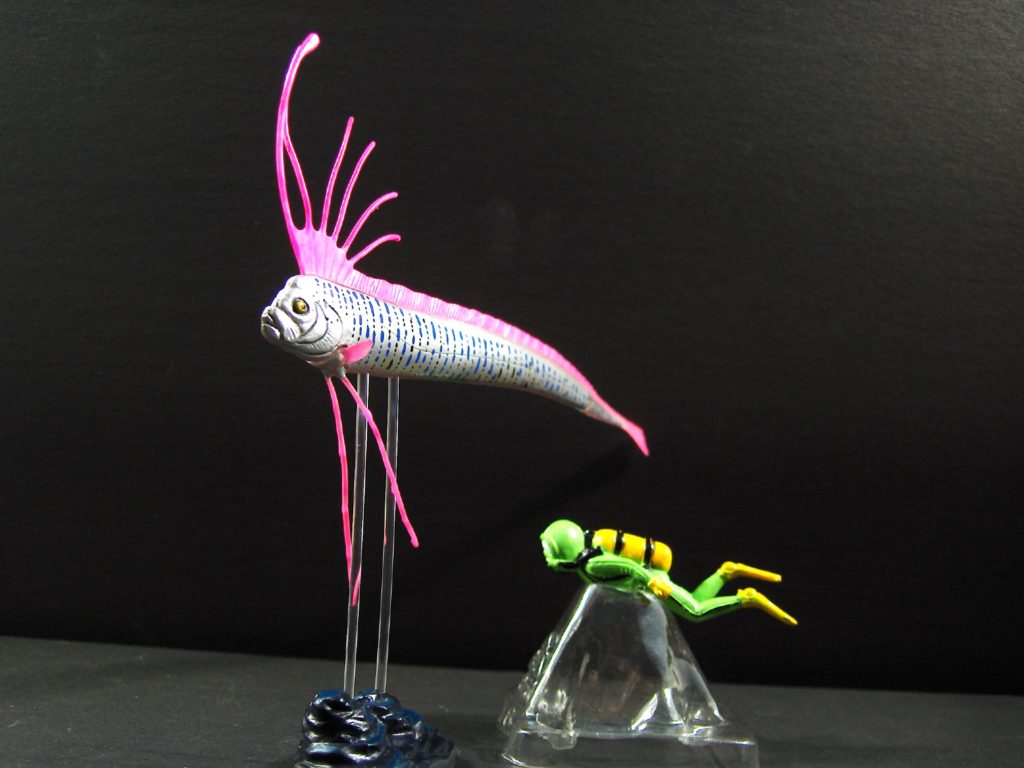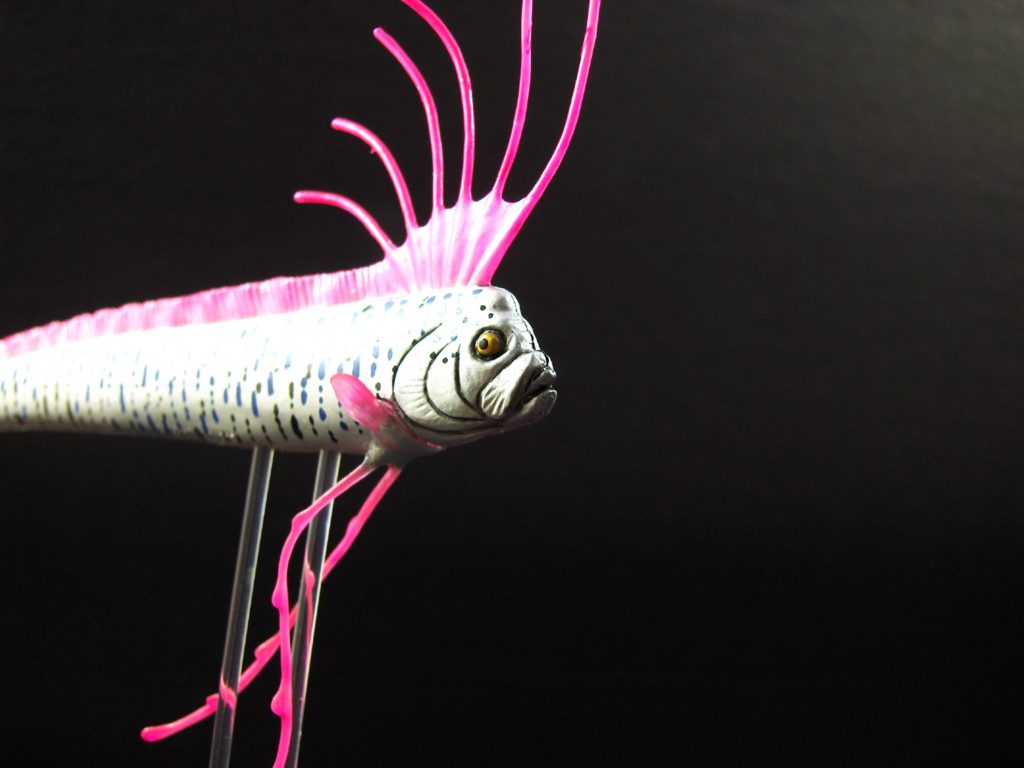After all of these years, I’m finally doing a blog post for the Toy Forums! It is of course a fish, and since it’s hard to decide I went with one that arrived only a couple of days ago–the updated Slender Oarfish Regalecus russelii (Cuvier, 1816) made for the revised Colorata Deep Sea Fishes box.

The slender oarfish is one of two species in the genus Regalecus, and is the smaller of the two species; at a mere 8 metres long, it is dwarfed by the larger R. glesne, the Giant Oarfish or King of the Herrings, which supposedly reaches 15 metres (making it the longest modern fish by quite a lot!), in the family Regalecidae, order Lampriiformes. They are generally deepwater fish that rise closer to the surface at night for prey, but the Slender Oarfish is much more limited in its range, to warmer Pacific and Indian ocean waters (the Giant Oarfish ranges throughout the Atlantic, Pacific and Indian oceans). Both are notable for being most frequently seen washed up on shore and generating news headlines about sea monsters.

This figure is about 20cm long, and almost ram-rod straight, which makes measuring easier, and represents the feeding posture (if not orientation) well. It is very laterally compressed, less than 2 cm wide at the head. The overall colour is an iridescent silver with blue and black spots and bars along the whole body. The opercula and facial features are outlined in black, and the eye is gold with a black pupil.

All of the fins are very slightly translucent, and a muted pink colour. This makes it stand out compared to the vast majority of figures made of the same (or related…) fish, which tend to go with dark red. Maybe it’s meant to look more like it would underwater? The ventral fins and posterior 1/4 including the caudal fin are separate pieces. The nature of Colorata soft PVC is that they can be tricky to insert, but don’t tend to fall out easily. One interesting thing is that removing the tail end can help match a common feature of many washed-up specimens, where the tail is missing (often due to trauma).

As with most Colorata fish figures, this oarfish comes with a base. In the full box set the rods are on a sprue and can be cut to a desired length. Unusually, this figure has two rod insert spaces, probably because the length of the fish would be unstable with just one (or would require a much longer base). On mine, the rods are uncut as it fit my displays better–and also to allow the trailing pelvic fins to hang properly.

Like most Colorata figures (especially, in my experience, their fish), the detail on this figure is exquisite. Although difficult to capture in the photos, everything is sculpted, right down to the individual fins rays and slight depressions on the mouth and opercula. The dorsal fin even has a slight undulation running along its length. The only thing lesser about it–the base is far more generic than that used for the original Oarfish by Colorata. And due to the two-peg system, these can’t be interchanged. Overall, this is a fantastic figure that represents the actual fish well. It is an improvement in many ways over the original, in particular in paint and sculpt details. The anterior dorsal fin is especially strikingly different.

These figures are probably not meant as toys, in part because of their pieces that can be lost (to say nothing of breakable plastic rods); and in part because they are hard to get (available only in Japan). Plus the sets are relatively expensive– 3,780 yen is the list price, and of course shipping, etc to get them out of Japan. But the set is definitely worthwhile for collectors of marine or unusual animals. Or, if preferred, they are often available on auction sites or through peer-to-peer individually (I got mine that way, as most of the box was a reissue). Barring that, there are a number of other Oarfish models, all from Japan (or…MPC from the 60s) but the same challenges exist to get them, and most are limited runs.
Disclaimer: links to Ebay and Amazon on the AnimalToyBlog are affiliate links, so we make a small commission if you use them. Thanks for supporting us!




Thanks for your first post Sean. I have this version in my Synoptic Collection but I have to admit, even though the dorsal fins look better, I prefer the pose and base of the original 🙂
It is more dynamic, but I don’t think it’s very true to life. The sculpt and detail on the revision is miles ahead though, and there isn’t even that much time between them.
Well, if the newer one is more realistic to you then I am glad that’s the one I have (and yes, it does display easier this way LOL)
Really… just have both! Honestly, the other one looks more like depictions of R. glesne
Great review! I love this fish, so unusual.
[…] © Animal Toy Forum […]